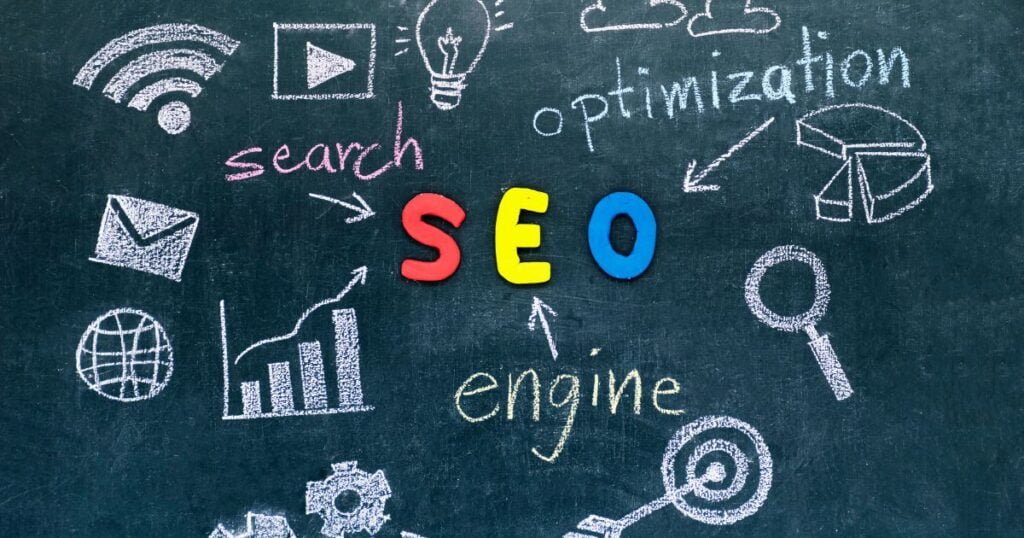Knowing the nuances of SEO ranking factors is like having the key to unlocking the full potential of your website in the always-changing digital scene. It’s not enough to merely strew keywords about; you also need to understand the dynamic components that elevate your online presence.
Every element matters in deciding where your website appears in the enormous ocean of search results, from how search engines read your content to the user experience you offer. Join SEOjust as we set out to solve the riddles surrounding SEO ranking criteria, providing you with the knowledge necessary to successfully negotiate the competitive landscape and establish your dominance.
What are SEO ranking factors?

The hidden influences that affect how your website ranks in search engine results are called SEO ranking factors. Search engines assess your site’s relevancy and credibility based on a dynamic combination of characteristics, not just keywords.
These elements work together to influence your online exposure. They range from the caliber of your content and user experience to the design and mobile friendliness of your website.
Backlinks, page speed, and your site’s security contribute to this intricate web of considerations.
Understanding SEO ranking factors is like deciphering the language search engines speak, helping you optimize your site strategically for a higher rank in the competitive digital landscape.
Also Read: Power of SEO for Small Businesses – 6 Tips to Maximize Your Small Business SEO
Types of SEO ranking factors
- On-page ranking factors
- Technical ranking factors
- Off-page ranking factors
On-page SEO Ranking Factors

The specifics of a page’s performance in search engine results are determined by its on-page SEO ranking variables. These elements affect your webpage’s exposure and relevancy to search engines, acting as the website’s DNA. We’re talking about optimizing elements directly on the page itself. It starts with your content – the words, images, and multimedia that tell your story. Think of it as a conversation between your page and search engines.
Relevant, High-Quality Content
Relevant and high-quality content is like the VIP pass to the top of the on-page SEO charts. Imagine your web page is a party, and users are the guests. When your content is relevant, it’s like playing the perfect playlist everyone wants to hear – users find precisely what they’re looking for.
Let’s now discuss quality. Good content is like giving delicious appetizers instead of stale chips; it’s the life of the party. Users remain on your site longer when it has valuable, engaging, and educational information; this tells search engines that your party is the place to be. Creating a memorable experience is more critical than loading your page with keywords.
Think of relevance and quality as the dynamic duo. Relevant content ensures you speak the same language as users and quality content keeps them glued to your page. When search engines see this harmony, they push your page higher in the rankings – it’s like getting a coveted spot on the VIP list of search results.
For on-page SEO success, make your content the star of the show. Keep it relevant to user queries, serve up the quality that leaves an impression, and watch as your webpage becomes the go-to destination in the digital realm.
Keyword Placement
For search engines, keyword placement is similar to strategic signposting. Think of your website as a road trip, with keywords acting as the signs that direct visitors and search engines to the appropriate locations. The title tag serves as the roadside billboard, informing onlookers of what to anticipate from the journey with the size of a large sign posted at the entry. This is an important place to include keywords because the initial impression determines the tone for the entire journey.
Headers – they’re like road signs along the way, breaking down the journey into meaningful sections. When you place keywords in titles, it’s akin to making those signs clear and informative. Users and search engines appreciate the clarity; it helps them navigate your content smoothly.
Keyword placement in the body of your text is similar to scattering hints throughout a treasure hunt. Naturally, incorporating keywords into your writing tells search engines that your material is a goldmine of pertinent information. But remember that the goal is a smooth integration that improves the user experience, not cramming keywords.
URLs are like the addresses on your roadmap. When you incorporate keywords into your URL, it’s like having clear directions to your destination. It helps users understand the content and makes it easier for search engines to index and rank your page accurately.
Image Optimization
In search engine terms, image optimization is similar to giving your webpage a visual boost. If your website were a gallery, the photos would be the artwork, and when they are optimized, they would steal the show. Your curator is alt text; it functions similarly to giving each masterpiece a thorough description. It’s like giving search engines a guided tour when you include informative alt text with your photos, ensuring they comprehend and value the visual material.
Like organizing your gallery’s storage, file size is also essential. Faster loading speeds are achieved by optimizing photos for the web, which is necessary for a seamless user experience. Because search engines favor quick galleries, minimizing file sizes is equivalent to ensuring your artwork is shown without latency.
File names are important, too; they’re like labels for each piece of art in your gallery. It’s like giving search engines a catalog when you give your picture file names, meaningful descriptions, and pertinent keywords; this makes it simpler for the machines to index and comprehend the material.
Just like adaptable artwork, responsive pictures are. They improve the user experience across various devices by adjusting to different screen sizes. Search engines value this flexibility, like receiving bonus points for delivering a smooth visual experience.
Picture optimization refers to optimizing your visual material for search engines. It’s similar to organizing an exhibition in which every item is displayed in a way that search engines can understand and enjoy, in addition to being aesthetically pleasing. Your webpage will thus be more likely to stick out and shine in the crowded field of search engine results when it transforms into a visually enhanced gallery.
Niche Expertise
Developing a niche expertise is similar to making your website the go-to source for specialist information. Think of your website as a library, with a carefully chosen selection of rare books representing your expertise. When your writing demonstrates in-depth knowledge of a particular subject, it’s as though you’ve become a reliable source of accurate and thorough information for consumers.
Search engines are grateful for this knowledge. It’s similar to having the upper hand in a particular library area. Seek engines are more likely to rank your page higher when visitors seek information related to your topic since they will view it as a trustworthy source.
Keywords are essential, too; think of them as your library’s index cards. When you organically include niche-specific keywords in your content, you’re helping search engines and consumers discover the critical information they’re looking for.
User participation is essential. It’s similar to holding book club meetings in your local library. Search engines view user interaction with your content—such as comments or sharing—as evidence that your subject matter knowledge is connecting with readers.
Specializing in a particular area of the internet’s enormous library is the goal of specialized expertise. It’s similar to becoming the go-to authority on a topic, drawing in customers looking for in-depth knowledge. Your website becomes more than another page in the library when it emanates specialist expertise; it becomes the area that people bookmark and return to for trustworthy information.
Also Read: International SEO Tips for Every Marketer – Unlocking Global Visibility
Technical SEO Ranking Factors

Technical SEO ranking factors are like the backstage crew ensuring your website’s performance is a blockbuster. Think of your website as a theater production; technical SEO is the team working behind the scenes to make everything run smoothly. Page speed is crucial – it’s like ensuring the curtains open without a hitch. Users are engaged when your pages load quickly, and search engines smile at your site.
Page Speed
In the digital realm, page speed is comparable to your website’s vital signs. Page speed is the time it takes for a high-speed train to arrive at its destination if your website were a train. Fast page loads ensure that users (or passengers) board without waiting at the station, making the ride smooth and pleasurable.
Users adore speed since it’s like hopping on a quick train rather than waiting for a long one. When your pages load quickly, users stay on your site longer, investigate more, and are less likely to give up. Search engines note this customer pleasure; it’s like giving your train a preferred location on the timetable.
Mobile users highly value speed and see it as having an express lane for devices with smaller screens. Users on the go will have a seamless experience when your website loads quickly on mobile devices, and search engines will prefer mobile-friendly websites in their results.
Bounce rates are impacted by speed; it’s similar to people choosing whether to remain on a train or get off. Users are more likely to stay on your sites if they load quickly, which lowers bounce rates and tells search engines that your material is worthwhile.
Mobile-Friendliness
Mobile-friendly means that your website should be designed to work flawlessly on all platforms, especially those with smaller screens like tablets and smartphones. Think of your website as an adaptable piece of clothing; making sure it looks as good on a mobile runway is equivalent to making sure it is mobile-friendly. It’s like having a wardrobe that fits everyone when your website adjusts to different screen sizes, guaranteeing that smartphone users get the same great experience as desktop users.
Convenience is what users crave, and making a website mobile-friendly is like giving them a simplified, on-the-go experience. Users stay longer, interact more, and are more likely to come back for another look when your website is simple to use on mobile devices. This customer contentment is noticed by search engines, and it’s equivalent to receiving extra praise and landing a top place in their rankings.
Functioning is equally as important as appearances when it comes to mobile friendliness. It’s similar to owning a well-fitting, aesthetically pleasing wardrobe. Users are guaranteed a hassle-free experience when buttons are simple to push, text can be read without zooming in, and graphics load rapidly on mobile devices. This practical elegance is appreciated by search engines, and it’s like receiving recognition for offering a well-thought-out mobile wardrobe.
Core Web Vitals
Core Web Vitals are like an annual physical for the user experience on your website, making sure everything is in excellent working order. If your website were a workout program, Core Web Vitals would be the essential indicators gauging its effectiveness. Largest Contentful Paint (LCP) is like tracking how quickly your main content loads – a fast start to the workout. When your main content appears without delay, it’s like having a speedy warm-up, keeping users engaged and satisfied.
First Input Delay (FID) is the responsiveness of your site, similar to how your body reacts to a workout command. When users can interact with your site without a lag, it’s like having a responsive and agile fitness routine, creating a positive experience.
Cumulative Layout Shift (CLS) is like maintaining stability during your workout – it measures how much your site layout shifts during loading. When your elements don’t unexpectedly jump around, it’s like ensuring users can focus on the exercise without distracting movements.
Search engines prioritize user experience, and Core Web Vitals are like the fitness report card. When your website achieves these vital metrics, it impresses users and search engines. It’s not just about looking good; it’s about delivering a seamless and enjoyable workout routine in the digital realm.
Website Architecture
Proper website architecture is essential for SEO success and a seamless user experience. Think of it as the plan of your digital castle. See your website as a stately home, with the architecture serving as the interior design to ensure guests can quickly move about it. An easy and intuitive route is created by well-organized architecture, which is similar to having clear signage directing people to the key attractions.
It’s essential to have a logical structure; think of it as assigning rooms in your house according to their functions. Users and search engines can quickly ascertain the hierarchy and significance of any material portion when it is appropriately sorted and arranged. It’s similar to having a house where guests may freely roam about, and each room has a distinct purpose.
The road is an internal connection, similar to building brightly illuminated hallways connecting various rooms. Users and search engines may easily browse your palace and find exciting material when internal links are arranged well. It’s similar to offering a guided tour that guarantees guests won’t get lost.
The address is a well-organized URL structure; it functions similarly to a well-displayed house entrance. Having clear, descriptive URLs helps search engines comprehend the material’s structure and makes it easier for users to navigate. It’s similar to having a prominent address that guarantees search engines, and people reach the correct location.
Site Security
Having a solid security system for your digital fortress is similar to having site security. If your website were a highly secure vault, site security would be the watchful defender, ensuring illegal entry is a faraway worry. A fast website is similar to having a dependable guard on duty around the clock, protecting user data and your content.
The security emblem, or HTTPS, serves as a visual cue to site visitors that their information is encrypted and your site is secure. Having HTTPS on your website is like having a secure entrance that increases user and search engine confidence. It warns that private information, such as payment details or login passwords, is protected.
Frequent updates act as security patrols, similar to ensuring your stronghold has the newest defenses installed. Keeping the software and plugins on your website up to date is like having observant patrols that quickly find and address issues. This security dedication is valued by search engines, which is like receiving a stamp of approval for responsible digital stewardship.
The shields are virus and firewall protection; they act as an impenetrable barrier against online dangers. Ensuring a safe environment for users and search engines means fortifying your site with firewalls and doing routine virus scans. It’s essential to provide a secure environment for everyone who comes, not only to safeguard your belongings.
Also Read: SEO and SEM Services: Which is Better to Grow Your Business?
Off-page SEO Ranking Factors

Off-page SEO ranking factors are like the endorsements and recommendations your website receives from the online community. Imagine your website as a popular hangout spot; off-page SEO is like the buzz and reputation it gathers beyond its walls. It’s about what others say and do about your site.
Backlinks
Backlinks function as endorsements from other online organizations and are similar to digital recommendations for your website. Consider backlinks as the audience’s applause, and consider your website as the star on the online stage. Linking to your material from respectable websites is like receiving applause from the online community and telling search engines that your information is essential.
Quality counts; it’s like having well-known people in the crowd supporting you. It’s like getting acknowledgment from the internet elite when your pages are linked to famous websites in your industry. These excellent backlinks increase the trustworthiness of your website since search engines view them as powerful recommendations.
Quantity is also crucial; it’s like when everyone applauds simultaneously. Linking to your content from many websites, especially varied ones, is like building a support system symphony. Search engines see this broad recognition as an indication of the value of your material across several online communities.
Also Read: Top 10 Affordable Local SEO Services In 2024
FAQs
How much time does it take to get results from SEO?
SEO is a systematic procedure. While some adjustments show effects more quickly, significant advancements might only appear for a few months. The secret is to be patient.
How do backlinks fit into SEO?
As digital endorsements, backlinks increase the authority of your website. Diverse, high-quality, and relevant backlinks are essential.
Is content marketing still an SEO ranking Factor?
Indeed. The foundation of SEO is high-quality content. It draws visitors and keeps them interested while indicating to search engines that your website is reliable.
Conclusion
Knowing SEO ranking Factors is like having a compass to navigate the broad internet terrain in the ever-changing world of digital presence. Making your website stand out from the competition online and offering an engaging user experience is more critical than focusing only on keywords or technical adjustments. Your dependable allies will be user-centered design, consistency, and relevance. Continue to embrace, optimize, and adjust to the changing digital world.




